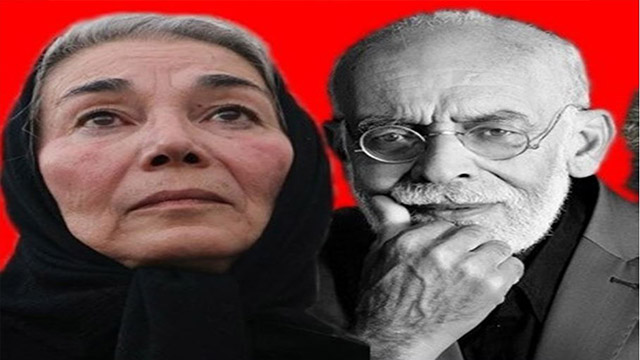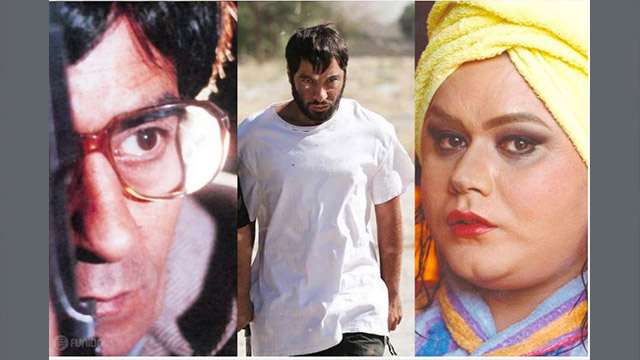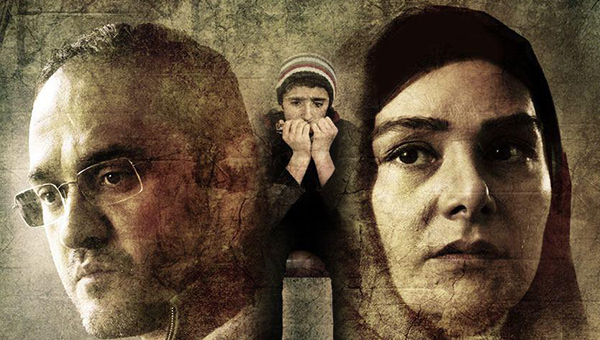ifilm website's new article highlights a comparison drawn by some of the Iranian actors between values projected in the country's cinema before versus after the Islamic Revolution.
The victory of the 1979 Islamic Revolution under the leadership of Imam Khomeini could be the endpoint to all the paths that the Pahlavi dynasty went through in a bid to change the Islamic culture of Iran, one of which was that of arts and cinema.
The Western culture was strongly promoted in our country's cinema industry during the Pahlavi era while the victory of the Islamic Revolution was a page-turner as it went against promoting immoral culture in the country.
At first, it was thought that the Islamic ruling was incompatible with cinema and that cinema would be removed from the cultural life of this country. However, when the Shia clerics and the late founder of the Islamic Revolution, Imam Khomeini, approved some movies as instances of good wholesome cinema, a new perception regarding the future of Iranian cinema emerged.
The first cinema built in Iran
With the support of the Pahlavi Dynasty, around 1924, a person named Ali Vakili built a brand-new cinema called "Grand Cinema" where the first feature film of Iranian cinema, 'Abi and Robbie' by Ovanes Ohanian (1930), was screened. From 1941 to 1953, the US attempted to infiltrate into Iranian cinema so much so that out of 400 films shown at Iranian cinemas in the 1940s, 300 were American films. The US intelligence agency had begun plans to screen and produce films in non-communist countries such as Iran. As part of this project, a group of American professors and filmmakers (Syracuse University team) visited Iran in the early 1950s to establish film processing laboratories and train Iranians to make documentaries and educational films.
In the following years, the production and screening of commercial films with unclean content began to expand. However, after the uprising of June 1963 in Iran with religious discourse prevailing over other discourses such as Marxism, liberalism and nationalism, the screening of such films was frowned upon. In particular, the awareness came from key religious figures who warned people of the possible negative effects of nudity and immorality depicted in these flicks.
Pre-revolutionary cinema, gross and immoral cinema
From 1956 onwards, the Iranian cinemas' screening of pornographic films made in Europe and the United States gradually became a public concern. According to some writers, many Iranians at the time of the Islamic Revolution believed that cinema corrupts people, and setting cinemas on fire in the midst of the Islamic Revolution was an allegory for the devilish nest of corruption and vulgarity. Meanwhile, at the height of the Islamic Revolution, cinemas were set ablaze one by one as they were considered a place of ignorance.
Perhaps the formation of post-revolutionary cinema in Iran can be considered in three different ways. There were some movies still aligned with values before the Islamic Revolution. Some other filmmakers also tried to shape the post-revolutionary cinema through the revolution itself. The outcome of both strands did not last long given that the Iraq-Iran war started very soon.
The first group understood that the audience may not want their flicks anymore, though very few from the first group joined the second batch.
The second group, with the formation of Iran’s Fajr Film Festival in the following years, gradually achieved the desirable elements of the revolution, to which many filmmakers now belong.
But, there was a third group who waited. Those directors, actors, and locals wanted to see what the situation would be like? And would they find a space to work in the post-revolutionary cinema?
The Islamic Revolution cinema is miles away from that of the Pahlavi era
Mohsen Ali-Akbari is one of the most well-known producers of Iranian cinema who said in a media interview of the differences between pre- and post-revolutionary cinema, noting that “the growth of Iranian cinema after the Islamic Revolution is quite tangible …. Now, the cinema after the Islamic Revolution is miles away from that of the pre-revolution era, which indicates that the cinema has taken the right path for its activities.”
He added, "Of course, my description of Iranian cinema as successful is not limited to foreign festivals attendance, but the fact that the Iranian cinema products are well covered in international news outlets and chased after by artists from other countries shows the importance of such issue."
Akbari concluded, "But, apart from the content and storyline, the Iranian cinema products are now very strong in terms of their structure in comparison to those made in the past.”

The content of cinematic products in the Pahlavi era was absurd and derived from Western culture
Parvaneh Masoumi, the actress of TV series ‘Prophet Joseph’ also referred to the cinema before and after the Islamic Revolution, saying, “I believe we have good male and female actors in our country's cinema. We have good directors in our country who are making films, but in the cinema back in the Pahlavi era, we did not see such level of acting on the part of actors and those involved in cinema. In the past, the promotion of Western promiscuity was attempted in our country's cinema."
She continued, "During the Pahlavi era, I worked in Iranian cinema and have had the experience of appearing in movies after the Islamic Revolution, and I believe that cinema was able to find its identity and shine in various arenas. We now make honorable films by our country's filmmakers, but in the Pahlavi era, there was a content void in movies."
Masoumi also noted, "I am grateful to Allah as the Islamic Revolution has brought lasting security to our country and martyrs and their families have provided security and shaped our identity in this country. Our country's cinema should take more effective steps to promote the culture of self-sacrifice and martyrdom. While several works in the field of sacred defense have done justice to the subjects related to the Iraq-Iran war, but there is still room to promote such a culture among younger generations."
The cinema of the Pahlavi era was in opposition to human values
Mehdi Faqihi, the actor of the series ‘Saint Mary’, also said in a media interview that the difference between cinema in the Pahlavi era and that of the Islamic Revolution is very considerable," likening it to "the distance between the earth and the sky."
“The movies before the Islamic Revolution failed to promote human values among people, and the movies acted against the Iranian-Islamic identity, and for this reason, many families did not believe in going to the cinema," he added.
He continued: "Thank God, after the Islamic Revolution, we witnessed innovation and creativity in the content and technology of our country's cinema. Thank God we made good progress, but in the Pahlavi era, movies tried to alienate people from religion, not letting people develop a good attitude toward Islam."
Faqihi emphasized, “Art focuses on transferring human values and that in the Pahlavi era, the country's cinematic productions could not instill such values into people, and our films were showing a great deal of dancing with vulgar themes that have destructive effects on the thoughts of our country's youth. But, the Islamic Revolution solved this problem in general, and I believe that our cinema has the potential to become more revolutionary.”
Regarding one of the achievements of the Islamic Revolution, the actor said, "At the moment, we are capable of having nuclear energy and our country is progressing. The United States and its supporters tried to impose cowardly sanctions, though the Islamic Revolution is still moving and progressing."
Mystical themes entered the country's cinema after the Islamic Revolution
Reza Tavakkoli, the actor of some Iranian series and movies, said in a media interview that the Islamic Revolution was able to make dramatic changes in our country's cinema, adding, "Many martyrs who guaranteed the victory of the Islamic Revolution, as well as the eight years of holy defense, are part of our identity and it is necessary for our country's cinema industry to produce films with these themes. Such mystical and sacred themes did not exist before the Islamic Revolution, and the country's cinema did not deal with such issues.”
He continued, "We must produce works showing the oppressed Muslim countries such as Palestine because such goals are in line with those of the Islamic Revolution, and portraying innocent Palestinian mothers can certainly create the [real] ugly face of the fake Zionist regime in the minds of Iranian and international audiences and reveal its true colors."
AG/AG















i did not know this